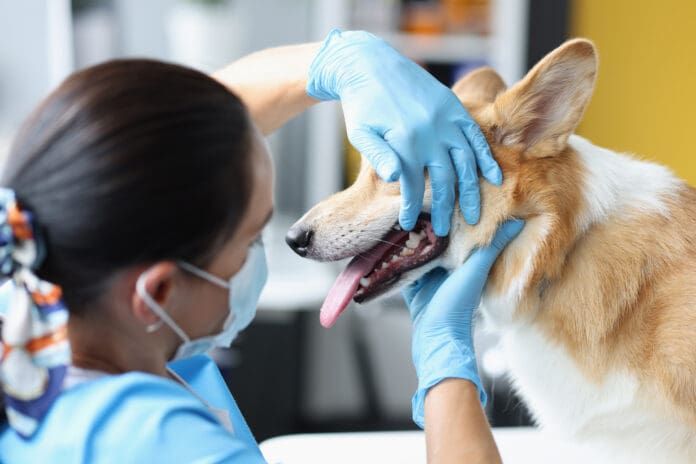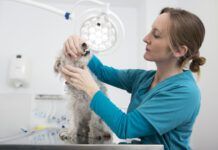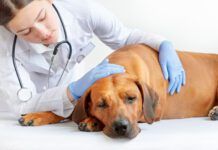A dog tooth abscess is a painful infection that may resolve with antibiotics but will likely require surgery to remove the problem tooth. No home treatment can resolve a tooth abscess. If not treated and the bacteria in the abscess manage to work their way down into the pockets around the tooth roots, big trouble can start, including additional infections. A tooth infection is an emergency.
Slightly Squishy Swollen Face
An abscess is a pocket of pus, bacteria, white blood cells, and dead tissue that can develop when a wound or other enclosed space becomes infected.
In the case of a tooth root abscess, bacteria find pockets in the gums a perfect place to live—warm, wet, and little-to-no oxygen. The bacteria quickly reproduce, and then the immune system sends in white blood cells to fight the bacteria. All this can damage the surrounding tissues, resulting in a slurry of nastiness that forms the abscess.
Abscesses are painful because of the pressure they exert on the surrounding tissues. Since there isn’t much space in a dog’s jaw, the infection expands where it can around the infected root, usually resulting in a firm lump on the side of the dog’s face.
Any tooth can develop a root abscess, but the canine teeth (the big pointy ones in the front) and carnassial teeth (the big chompers in the back) are the most common culprits. These teeth have long roots that go deep into the jaw. Note: The crown of the tooth is the part that we can see, and then the root extends into the gums and attaches in the jawbones. The deep roots anchor the teeth in place and protect the nerves and blood vessels that keep the living parts of teeth healthy.
Tooth root abscesses usually only occur on one side of the face and will be a firm or slightly squishy swelling. The swelling may feel warm to the touch, and your dog will likely be uncomfortable and not want to have his face handled.
Symptoms of a Dog Tooth Root Abscess
- Firm swelling on the side of the face, usually midway between the nose and eye or under the eye
- Not wanting to chew on that side of the mouth
- Poor appetite
- Rubbing at the face
- Fever
- Acting subdued and uncomfortable
Treatment
Small tooth abscesses may resolve with antibiotics alone. If you suspect your dog has a tooth root abscess, take him to a veterinarian to make sure that is truly what is going on. An abscess can often be diagnosed via exam alone, but your vet may also recommend a skull X-ray to look at the jaw and see where exactly the problem is.
Antibiotics may be able to kill off all the bacteria and clear the infection, but a deep-seated infection can be difficult to clear. If the tooth abscess does not respond to antibiotics or if the swelling returns, your veterinarian will recommend scheduling a dental cleaning and extraction to remove the infected tooth.
Removing the infected tooth does several things. First, it removes the damaged tooth, which is probably painful if the nerves have been breached by the infection. Second, it opens up the area so that the abscess pocket can be flushed clean, physically removing bacteria and debris so the pocket can heal.
You will notice that your dog feels better within days after the dental extraction.
There is no effective dog tooth abscess home treatment. Unless the abscess bursts, you cannot access it to clean out the bacteria and dead tissue causing the trouble, and the bacteria will continue to thrive. take him to a veterinarian to make sure that is truly what is going on
What to Do if Dog Tooth Abscess Bursts
If a tooth root abscess goes untreated, it will continue to grow. For shallower teeth, like the incisors or premolars, the abscess may eventually drain into your dog’s mouth. But for those canine and carnassial teeth, it is a long way from the tip of the root to the surface of the gum. This is why abscesses around these teeth show up as bumps on the side of the dog’s face. Given enough time, some of these abscesses will burst through the skin and cause an oozy, bleeding mess.
A ruptured abscess is gross, but it does relieve the pressure on your dog’s face and jaw and open up the area. Your vet will flush and clean the wound, then prescribe antibiotics to kill any remaining bacteria and speed up healing.
Your dog may still need to have the affected tooth removed, as a root damaged by an infection can continue to be vulnerable to future abscesses.






